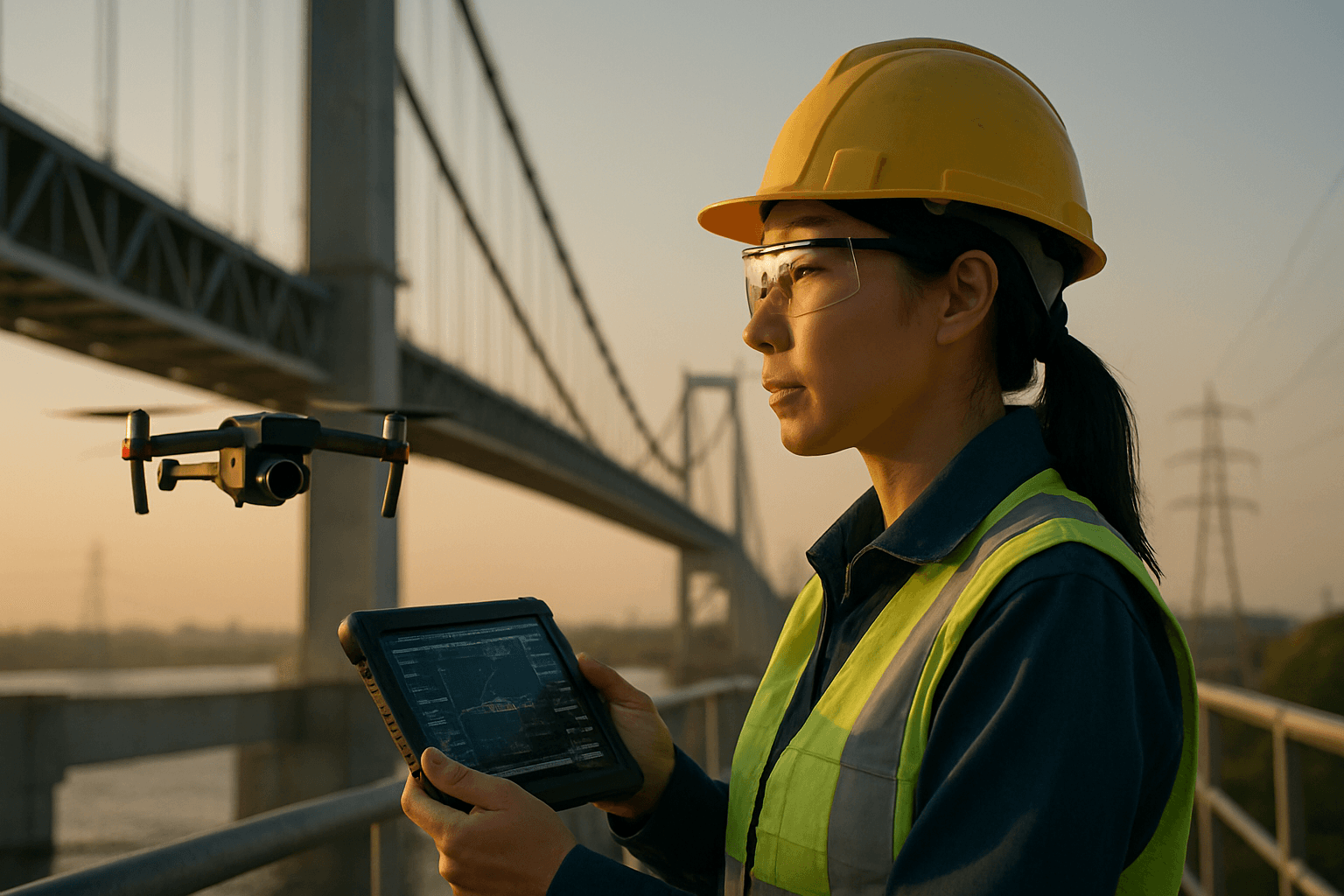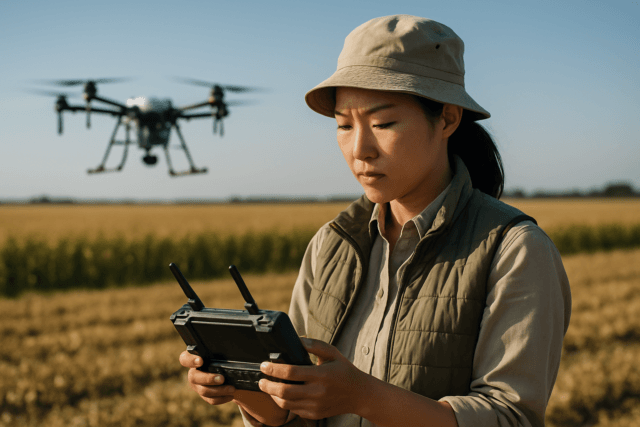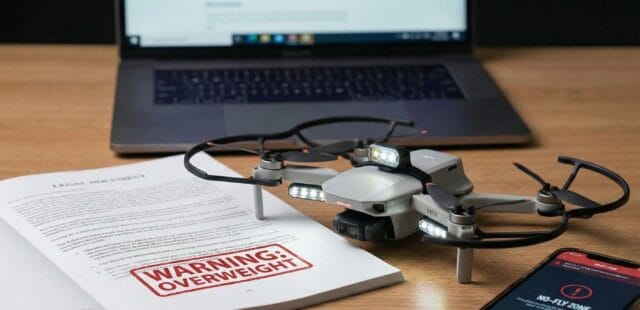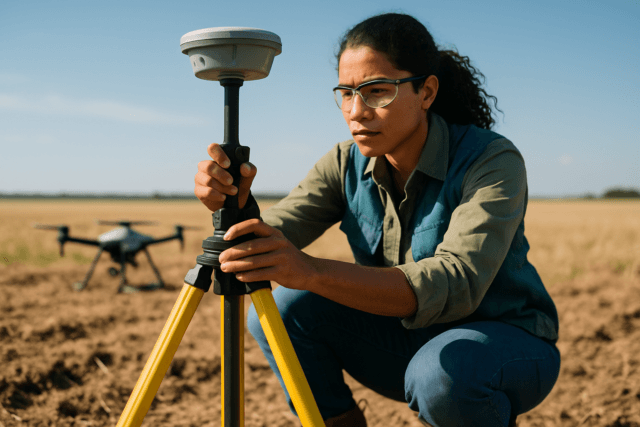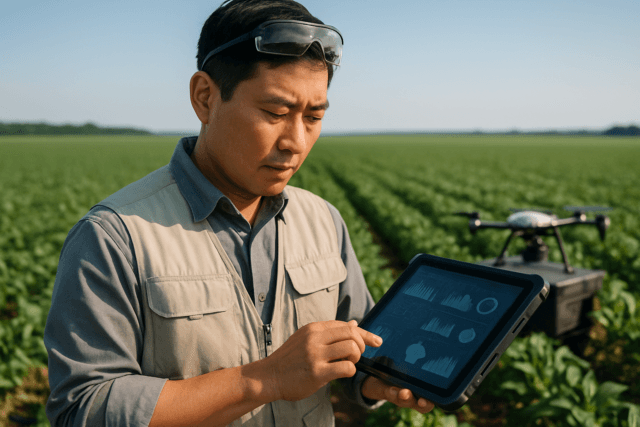The colossal networks of infrastructure underpinning our modern world – from towering bridges and sprawling power grids to intricate pipeline systems – demand constant vigilance to ensure their safety and operational integrity. Traditional inspection methods, often manual, hazardous, and costly, have struggled to keep pace with the sheer scale and complexity of these assets. Enter autonomous drones, a revolutionary technology poised to redefine how we monitor, maintain, and manage critical infrastructure. These intelligent aerial systems promise to usher in an era of unprecedented safety, efficiency, and data-driven precision, transforming asset management for good.
Revolutionizing Traditional Inspection Methods
The transition from human-centric to autonomous drone inspections marks a paradigm shift in infrastructure management, addressing many of the inherent limitations of conventional approaches.
Enhanced Safety and Efficiency
One of the most compelling advantages of autonomous drones is the dramatic improvement in safety. Inspecting structures like bridges, wind turbines, and power lines traditionally exposes human workers to significant risks, involving climbing at heights, navigating confined spaces, or working near energized equipment. Drones eliminate the need for personnel in these dangerous environments, mitigating the risk of accidents and injuries.
Beyond safety, autonomous drones bring unparalleled efficiency. They can cover vast inspection areas quickly and thoroughly, significantly reducing the time required compared to manual methods. This speed allows for more frequent inspections, enabling early detection of minor issues before they escalate into major, costly failures. For example, drones can complete bridge inspections in half the time of traditional methods. This operational continuity is particularly vital in industries like oil and gas or power generation, where downtime is expensive.
Cost Reduction and Increased Frequency
The financial benefits of autonomous drone inspections are substantial. Traditional methods often require expensive equipment like snooper trucks, scaffolding, or chartered aircraft, along with large crews. Drones offer a more cost-effective alternative, with some organizations reporting 30-50% reductions in inspection costs. For instance, bridge inspection costs can be reduced by as much as 75% when utilizing drones, eliminating expenses associated with lane closures and traffic disruptions. This cost-efficiency, coupled with faster turnaround times, allows for more frequent monitoring, leading to proactive maintenance strategies and extended asset lifespans.
Key Technologies Powering Autonomous Drone Inspection
The evolution of autonomous drones is intrinsically linked to advancements in several core technological areas, enabling them to perform complex inspection tasks with minimal human intervention.
Advanced Sensor Payloads
The “eyes and ears” of inspection drones are their sophisticated sensor payloads, which gather diverse and high-resolution data crucial for comprehensive assessments. Common sensor types include:
- Visual (RGB) Cameras: High-resolution cameras capture detailed images and videos, essential for identifying visible defects like cracks, corrosion, and wear and tear on structures. Drones now feature 4K, 6K, and even 8K cameras for sharp visuals.
- Thermal and Infrared (IR) Cameras: These detect heat anomalies and temperature variations, invisible to the naked eye. They are critical for identifying insulation failures, electrical faults, moisture detection, and internal structural issues in power lines, buildings, and solar panels.
- LiDAR (Light Detection and Ranging) Sensors: LiDAR uses laser pulses to create highly accurate 3D maps and models, valuable for generating precise digital twins of assets, penetrating vegetation to survey pipelines or power lines, and creating real-time 3D maps in challenging environments.
- Ultrasonic (UT) Sensors: Mounting UT probes on drones allows for safe and quick inspections of elevated or hard-to-reach areas, reducing risks for personnel by collecting live inspection data.
- Gas and Multispectral Sensors: These specialized sensors can detect gas leaks in pipelines, monitor environmental conditions, and provide data across diversified wavelengths for precision agriculture and land management.
The integration of these various sensors provides a multi-faceted view of infrastructure health, enabling inspectors to identify both visible and hidden issues.
Artificial Intelligence and Machine Learning
Artificial intelligence (AI) and machine learning (ML) are the brains behind autonomous drone operations, transforming raw data into actionable insights. AI algorithms enable:
- Autonomous Navigation and Obstacle Avoidance: Advanced AI-driven visual navigation systems allow drones to operate in complex environments, even where GPS signals are weak or denied, by recognizing and avoiding obstacles in real time.
- Automated Anomaly and Defect Detection: AI processes and analyzes vast amounts of visual and thermal data captured by drones to automatically detect anomalies, classify damage types (e.g., cracks, corrosion, potholes, vegetation encroachment), and flag issues from micro-cracks to abnormal heat signatures. This reduces reliance on manual review and provides accurate, repeatable results.
- Predictive Maintenance: By identifying early signs of degradation, AI helps forecast when maintenance should occur, allowing for smarter maintenance schedules, reduced emergency repair costs, and extended asset lifespans.
- Data Processing and Analysis: Machine learning algorithms continually learn from each inspection, enhancing precision and accuracy over time. Generative AI can even assist in generating structured reports and answering natural language queries about inspection findings.
Autonomous Navigation and “Drone-in-a-Box” Solutions
The concept of “drone-in-a-box” (DiaB) systems represents a significant leap towards fully autonomous operations. These solutions consist of weatherproof, self-sustaining docking stations that house, charge, and launch drones without human intervention. Pre-programmed to fly specific routes, collect data, and return to their base, DiaB systems enable frequent, high-quality inspections with minimal human oversight. This allows asset managers to deploy drones for daily or weekly missions, ensuring up-to-date data and proactive maintenance. Companies like NxtQube are developing these “drone ports” to automate field operations 24/7 in remote industrial environments, envisioning a future managed from a single web dashboard.
Diverse Applications Across Critical Infrastructure
The versatility of autonomous drones, combined with advanced sensor and AI capabilities, makes them invaluable across a wide array of infrastructure types.
Bridges and Roadways
Inspecting bridges and roads is a critical task, with regulations often requiring frequent assessments. Autonomous drones are transforming this sector by providing:
- Safer and Faster Inspections: Drones can quickly access hard-to-reach areas, such as the undersides and complex structures of bridges, eliminating the need for dangerous human climbs or expensive snooper trucks.
- Detailed Data Collection: They capture high-resolution images, videos, and thermal data, enabling precise detection of defects like cracks, corrosion, scour, and potholes. AI algorithms can then analyze this data to identify and localize damages.
- 3D Modeling and Tracking: Drones can generate detailed 2D and 3D models of bridges, which can be compared over time to track degradation and monitor repair progress.
Energy Infrastructure (Pipelines, Power Lines, Wind Turbines, Solar Farms)
The energy sector heavily relies on robust infrastructure, making drone inspection crucial for operational efficiency and safety.
- Pipeline Inspection: Drones offer a cost-effective, faster, and safer way to inspect thousands of miles of pipelines, both above-ground and subsea. Equipped with high-resolution cameras, thermal sensors, LiDAR, and gas detectors, they can identify external damage, corrosion, coating loss, joint failures, and leaks. Autonomous drones can follow pipeline contours, using onboard video analytics to assess surfaces in real-time.
- Power Line and Solar Farm Inspection: Drones equipped with thermal cameras and LiDAR sensors detect defects, electrical faults, and vegetation encroachment on power lines and solar farms, enhancing operations and significantly reducing risks associated with manual inspections. Autonomous drones with AI-driven navigation can operate in complex environments, recognizing and avoiding trees and poles.
- Wind Turbine Inspection: Ensuring the structural integrity of wind turbines is vital for sustainable energy. Drones conduct visual and thermal inspections to identify blade damage, defects, and thermal anomalies. Autonomous drone programs are already being tested for offshore wind maintenance, significantly reducing turbine downtime and personnel requirements for cargo delivery and inspections. Microdrones can inspect turbines up close.
Buildings and Industrial Facilities
Drones are increasingly being adopted for inspecting a variety of other critical assets:
- Buildings and Structures: High-resolution RGB and thermal cameras on drones can assess structural conditions, detect insulation failures, moisture, and general wear and tear on buildings. Indoor inspection drones are particularly valuable in warehouses and manufacturing facilities for monitoring machinery, production lines, and inventory, ensuring operational efficiency and compliance.
- Confined Spaces: For hazardous or inaccessible areas like sewer systems, wastewater pipes, ventilation shafts, or mines, autonomous drones provide a significantly safer inspection alternative, collecting data where humans cannot.
Overcoming Challenges and Shaping the Future
While the future of autonomous drones in infrastructure inspection is promising, several challenges need to be addressed for widespread adoption.
Regulatory Advancements
Current regulations, such as the FAA’s Part 107 in the US, often limit drone operations to within visual line of sight (BVLOS). However, regulatory frameworks are evolving. The FAA’s proposed Beyond Visual Line of Sight (BVLOS) rule, for example, aims to establish a predictable regulatory pathway for safe, routine, and scalable low-altitude BVLOS operations, unlocking expanded commercial uses in infrastructure inspection. This proposed rule would remove the need for individual waivers, allow for larger aircraft (up to 1,320 pounds), and establish new airworthiness acceptance processes, streamlining approvals and facilitating broader deployment. Other countries, like India, have also seen significant policy shifts liberalizing regulations for civilian drone use, including categorization based on weight and mandatory remote pilot certificates. As these regulations mature, they will enable more complex and far-reaching autonomous drone missions.
Technological Hurdles and Future Innovations
Despite rapid advancements, challenges remain, including battery limitations, data security, and the need for robust infrastructure for autonomous swarm operations and drone traffic management. Limited flight times are a significant constraint, though innovations in ultra-low-power AI chips are showing promising results in extending flight endurance without requiring larger batteries.
The future holds exciting developments:
- Swarm Technology: Coordinated fleets of autonomous drones working together will be useful for large-scale inspection and monitoring, though infrastructure for managing these swarms is still emerging.
- Agentic AI Platforms: These will combine autonomous hardware, intelligent mission software, and command centers to enable pilotless, round-the-clock drone operations at scale.
- Miniaturized Sensors and Drones: The development of smaller, more powerful sensors and microdrones will allow for inspection in even more confined and intricate spaces.
- Digital Twin Creation: Continuous monitoring data from drones will feed into digital twin models, enabling comprehensive simulations and predictive maintenance strategies.
- Enhanced Connectivity: The rise of 5G and edge computing will make drone-powered IoT networks faster, smarter, and more autonomous, enabling real-time data transmission and on-board processing.
Conclusion
The future of autonomous drones in infrastructure inspection is not merely an incremental improvement; it is a fundamental transformation. By leveraging cutting-edge robotics, advanced sensors, and sophisticated AI, these unmanned aerial vehicles are making critical asset management safer, more efficient, and more cost-effective than ever before. As regulatory frameworks continue to adapt and technological innovations push the boundaries of what’s possible, autonomous drones will become indispensable tools, ensuring the longevity and reliability of the infrastructure that powers our world. The era of intelligent, self-flying inspectors is here, promising a more resilient and sustainable future for our built environment.

